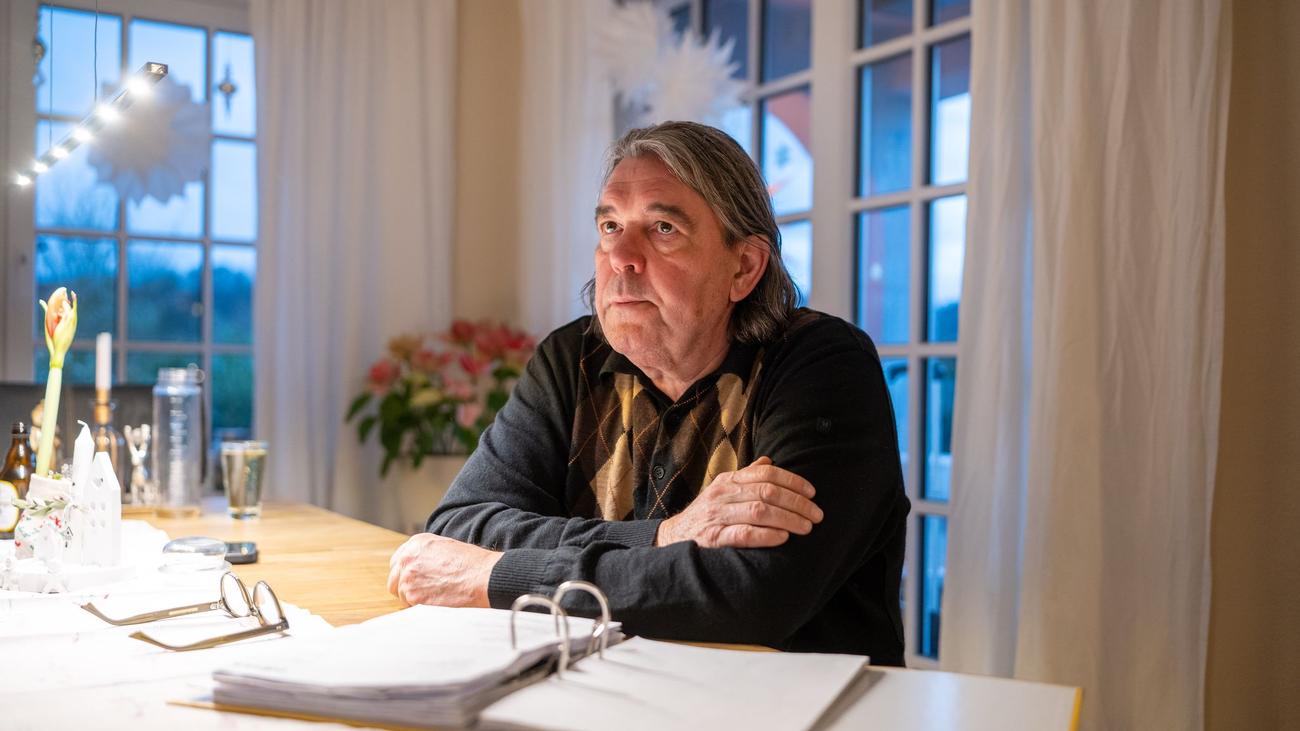
A Ten-Year Odyssey for a Diagnosis: Bernward Wittschier’s Journey with a Mysterious Neurological Condition
Ten years ago, Bernward Wittschier’s life took a sudden and debilitating turn. Numbness in his fingers, toes, and face emerged, accompanied by a disconcerting loss of taste, leaving only a sense of saltiness. Over time, the numbness spread relentlessly, extending from his forehead down one side of his head and into his shoulder.
"It’s as if I’ve had ten anesthetic injections at the dentist, and the numbing never wears off," the 63-year-old lamented. The numbness now affects his speech and swallowing, causing him to choke 30-40 times a day. Fear gnaws at him as he anticipates the disease’s relentless progression.
But the most disheartening aspect for Wittschier is the elusiveness of a diagnosis. He has endured a relentless cycle of medical consultations, seeking answers from a myriad of specialists: general practitioners, neurologists, pulmonologists, dentists, and orthopedists. His search eventually led him to the Center for Rare Diseases at the Saarland University Hospital in Homburg.
Despite multiple hospitalizations and extensive neurological testing, a clear diagnosis or effective treatment has remained out of reach. "I’m at a loss and on the verge of despair," Wittschier confessed.
The Challenges of Diagnosing Rare Diseases
The experts at the Homburg Center for Rare Diseases are acutely aware of the arduous and time-consuming nature of diagnosis in such cases. "It can take up to five years on average," explained Katarzyna Rososinska, the center’s managing director and navigator. In extreme cases, it may take decades to determine a definitive diagnosis.
Misdiagnoses are not uncommon, and sometimes, a diagnosis simply cannot be reached. "Unfortunately, we sometimes reach diagnostic dead ends," Rososinska acknowledged.
On February 28th of each year (February 29th in leap years), the world observes Rare Disease Day. A disease is considered rare if it affects fewer than 5 per 10,000 individuals. In Europe, an estimated 30 million people live with rare diseases, with 4 million in Germany. Even rarer conditions, known as ultra-rare diseases, affect less than 2 per 100,000 individuals.
According to Rososinska, around 8,000 rare diseases have been identified to date, with new ones emerging continuously. This increase is partly attributed to advancements in genetic testing, which enables researchers to link symptoms and disease profiles. Additionally, a growing interest in rare diseases has been fostered through political initiatives.
The Role of Rare Disease Centers
In Germany, 36 centers for rare diseases have been established at university hospitals, providing a network of specialized expertise. These centers collaborate and share information, referring cases to specialists at other centers when necessary.
"Patients approach our center when they have reached an impasse in their diagnostic journey," said Robert Bals, the center’s spokesperson. After reviewing medical records, cases suspected to involve a rare disease are discussed with colleagues within the university hospital. Based on the findings, patients are referred to appropriate departments, such as neurology, orthopedics, or pediatrics.
The Homburg center receives approximately 70 inquiries per year. In about one-third of cases, a diagnosis can be established. For the remaining cases, either the condition is not rare or the diagnostic process is ongoing.
Patients seeking help at the Homburg center come not only from Saarland but also from neighboring regions, including Rhineland-Palatinate, North Rhine-Westphalia, and Luxembourg. Specialized outpatient clinics at the university hospital treat numerous patients who have already received a diagnosis, with approximately 3,000 inpatient cases annually.
The Scarcity of Treatments for Rare Diseases
The development of effective treatments and medications for rare diseases faces a significant challenge due to the limited number of cases, according to Bals. Only 3% of these diseases have approved medications available in Germany.
Rososinska encourages patients to persist in their search for a diagnosis, emphasizing that new symptoms may emerge in the future, providing valuable clues. "I have witnessed such cases firsthand," she noted.
However, after years of fruitless investigations, Wittschier has lost hope. "I’ve had every conceivable test done multiple times," he said. "Lumbar punctures, MRI scans, nerve tests. I’ve been suspected of having a brain tumor, Alzheimer’s, multiple sclerosis – but it was all wrong." He has also explored alternative therapies, including injections, corticosteroids, and homeopathy, without success.
A neurologist once told him, "Mr. Wittschier, I can determine that you have a significant neurological condition. You’re probably one of 10, 20, or 30 people in Germany with this condition. But I can’t tell you where it comes from."
Advocating for Patients with Rare Diseases
Since 2006, the Eva Luise and Horst Köhler Foundation has been dedicated to improving the medical care of children, adolescents, and adults with rare diseases. The foundation places particular emphasis on funding research. "The lack of research hinders the development of effective therapies and medications," the foundation stated.
Rare diseases can be genetic, infectious, or environmentally induced. Approximately 70% manifest in childhood, while others develop later in life.
The idea for the foundation originated within the family of former German President Horst Köhler. They had experienced firsthand "the desperate search for answers, the years-long odyssey from clinic to clinic, and the helplessness in the face of missing treatment options."
The Köhlers’ daughter suffers from a rare eye disease that has led to blindness. According to the foundation, experts estimate that up to 250 new rare diseases are discovered each year.
Wittschier clings to the hope that someone may one day recognize his condition or offer a plausible explanation. His deepest longing is "to experience a day where I feel and taste everything normally, like I did 20 years ago."
